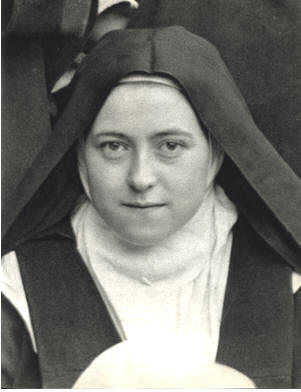 The Communion of Saints
The Communion of Saints
St. Therese of Jesus
-Intercession
Sister Mary of the Eucharist wanted to light the candles for a procession. She had no matches, but seeing the lamp that burns before the relics, she approached it, but, alas, she found it dwindling. There was only a faint glimmer in the charred wick. However, she managed to light her candle, and, thanks to her candle, all the other candles of the community were lit. It was that tiny lamp, almost extinguished, that produced those beautiful flames, which in turn, could have produced countless others and even set the universe on fire. However, the primary cause of that fire would always be that tiny lamp. Could then the beautiful flames, knowing this, boast of having caused such a fire, when they themselves were lit only thanks to that tiny spark? …
The same applies to the communion of saints. Many times, without us knowing
it, the graces and illuminations we receive we owe to a hidden soul, because God wants the saints to communicate graces among themselves through prayer, so that in heaven they love each other with great love, a love much greater than even the love of a family, even of the most ideal family on earth. How often have I thought that I could owe all the graces I have received to the prayers of a soul who has interceded for me before God and whom I will only know in heaven! Yes, a very small spark can bring forth great lights in the whole Church, such as doctors and martyrs, who are far above her in heaven, but who could say that their glory will not become her own? In heaven there will be no glances of indifference, because all the chosen will recognize that they owe each other the graces that have won their crown.St. Therese of Lisieux (1873-1897), Discalced Carmelite, Doctor of the Church. Last conversations, 15/07/1897.
Spanish
Sta. Teresita de Jesús sobre la Comunión de los Santos
Sor María de la Eucaristía quería encender las velas para una procesión. No tenía cerillas, pero al ver la lamparilla que arde ante las reliquias, se acercó; pero, ¡ay!, la encontró medio apagada, no quedaba más que un débil destello en la mecha carbonizada. Sin embargo, consiguió encender su vela, y, gracias a su vela, se fueron encendiendo todas las de la comunidad. Fue aquella lamparita medio apagada la que produjo aquellas hermosas llamas que, a su vez, hubieran podido producir infinidad de otras e incluso incendiar el universo. Sin embargo, la causa primera de ese incendio se debería siempre a aquella lamparita. ¿Podrán entonces las hermosas llamas, sabiendo esto, gloriarse de haber provocado semejante incendio, cuando ellas mismas sólo se encendieron gracias a aquella centellita?...
Lo mismo ocurre con la comunión de los santos. Muchas veces, sin que nosotros lo sepamos, las gracias y las luces que recibimos las debemos a un alma escondida, porque Dios quiere que los santos se comuniquen la gracia unos a otros por medio de la oración, para que en el cielo se amen con un gran amor, con un amor todavía mucho mayor que el amor de la familia, hasta el de la familia más ideal de la tierra. ¡Cuántas veces he pensado si no podría yo deber todas las gracias que he recibido a las oraciones de un alma que haya pedido por mí a Dios y a la que no conoceré más que en el cielo!
Sí, una centellita muy pequeña puede hacer brotar grandes lumbreras en toda la Iglesia, como doctores y mártires, que estarán muy por encima de ella en el cielo; ¿pero quién podría afirmar que la gloria de aquellos no se convertirá en la suya propia?
En el cielo no habrá miradas de indiferencia, porque todos los elegidos reconocerán que se deben mutuamente las gracias que les han merecido la corona.
Santa Teresita del Niño Jesús (1873-1897), carmelita descalza, doctora de la Iglesia. Últimas conversaciones, 15/07/1897.